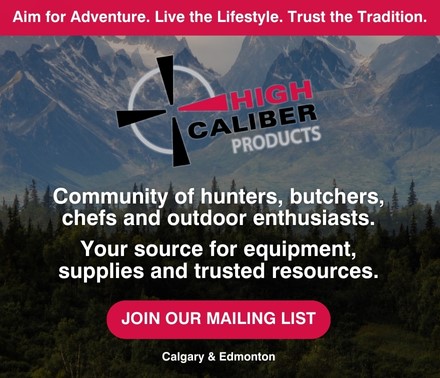Hunting Equipment: The Basics
To harvest an animal, there are definite basics you need to get started. There are plenty of ways to get fancy later—and no limit to the number of accessories and tools out there for hunters.
For first-time hunters, here is a list of basic tools to get the job done:
Legal
- Licences and permits (carry with you at all times)
- Tags with wire (for big game)
Navigation
- Copy of Alberta Discover Guide (you can download the App too)
- Copy of Alberta Hunting Regulations
- Map (county maps with landowners' names are invaluable)
- Compass (in case your GPS stops working)
Hunting
- Bow or firearm
- Arrows or ammunition
- Hearing protection (if hunting with a shotgun or rifle)
- Binoculars
- Game calls (if applicable)
- Decoys (if applicable)
Field dressing and transporting game
- Knife (check out our article on knives)
- Resealable plastic bags (for birds and small game after field dressing)
- Cheese cloth (for wrapping larger game after field dressing)
- Toboggan or game cart to transport big game
- Coolers and ice packs to transport birds or small game on a warm day
Safety and personal
- High-visibility item (blaze orange hat, toque, vest, jacket, etc.)
- Cell phone (you can get coverage just about anywhere)
- Basic first aid kit
- Headlamp (hands-free flashlight)
- Water bottle (be sure to stay hydrated)
- High-energy snacks
- Field lunch
- Antibacterial hand wipes
Your clothing and boots will depend on the season, and what and where you will be hunting. If you don’t want to buy five different camouflage jackets, a lighter or beige camo is most useful for Alberta. Lighter camo is great for birds/waterfowl in September (think cattails), and once the snow comes, winter camo is worth it for hunting big game.
That said, don’t let not having camo stop you from getting out there. Just dress for the weather (layers are best), add some blaze orange like a hat, toque or vest, and remember packing an extra pair of socks never hurts!
The next step is to actually get out there. But, of course, it’s not as easy as it sounds and it often takes many trips, even seasons, before you successfully bring home wild game to share with family and friends. But everything you’ve done so far has led up to this point. You’re in the field with your rifle, shotgun or bow and you have your game in your sight. You’ve gone through the checklist of everything you’ve learned and all the safety rules. You take the shot. What’s next? Find out in the next article in our Start Harvesting series: You Took the Shot – Now What?






